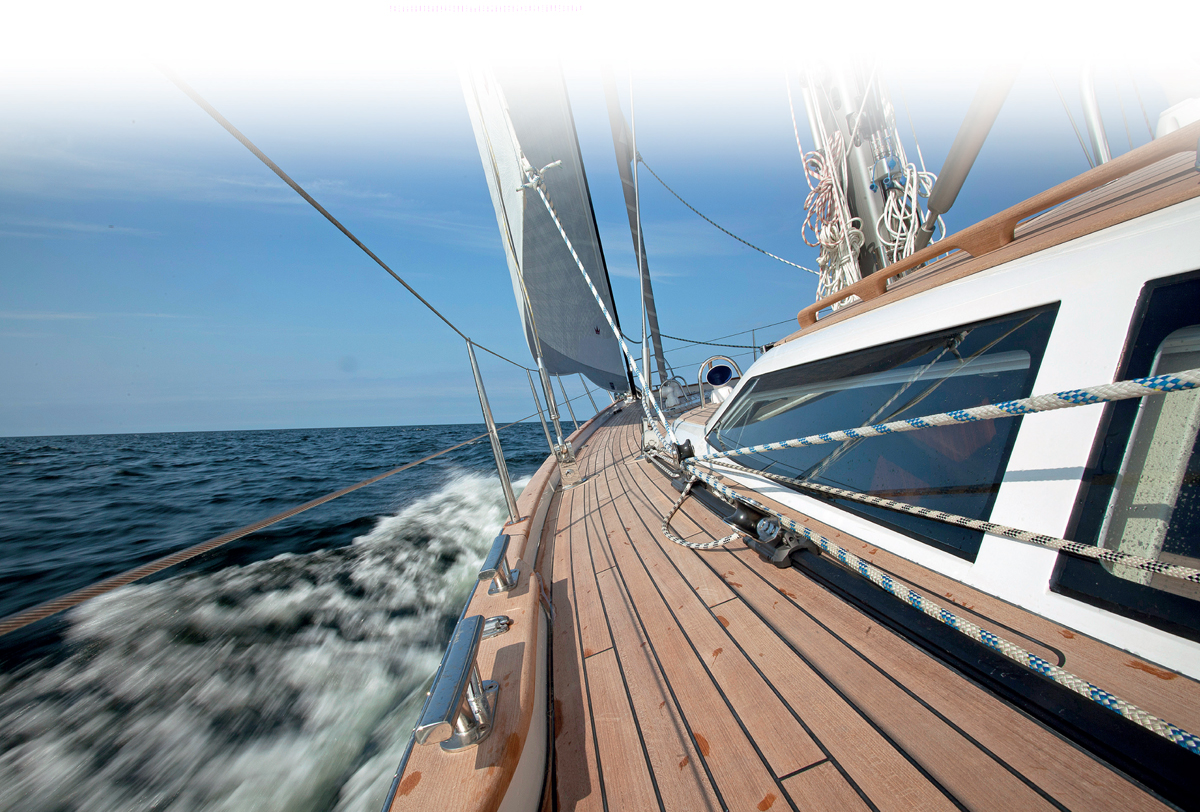
Fitting a towable genoa car, as seen in operation here, will allow complete control of the sheeting angle from the safety of the cockpit.
Sheeting points
With so much deck hardware available, it is now possible to fully upgrade your deck equipment, and also relocate it with minimal disruption.
Many older sailing boats are still fitted with their original deck equipment, and while fully serviceable, it normally requires a lot more effort to work than modern equivalents. On a few boats, the lead of the sheets may be wrong, or need rerouting due to additional deck equipment or a change of rig design.
Changing the genoa and mainsheet tracks and cars is very straightforward, helped by good design for the retrofit market. Many kits can use the bolt holes left by the original equipment, which greatly simplifies the job. If you want your genoa track curved or customised in some other way, many suppliers will be able to oblige, meaning you have endless possibilities to improve your sheet control.

Fitting a towable genoa car, as seen in operation here, will allow complete control of the sheeting angle from the safety of the cockpit.
Fitting towable cars
The correct sighting of the genoa car is essential to make full use of the cut of the sail, and many older yachts were fitted with two or more tracks each side to accept a wide range of hanked-on sails. Nowadays, where roller reefing is the norm, one track is usually enough, especially as it can be fitted with a ‘towable car’. This is an advance on the lockable ‘plunger’ car, where the crewman has to ease the loaded sheet, then kneel on deck beside the track, lift the locking plunger, move the car to a new position, and then drop the plunger again. Now you simply pull on a line from the cockpit and the car moves easily to a new position, to be held there by the line locked in a jammer.

Old deck layouts may have more than one track of the ‘plunger pin’ variety, which may be feeling its age and be in need of replacing.
Because there is some discrepancy between metric and imperial measurements used for tracks and the dimensions of various cars, it is usually best to start from scratch with all the components sourced from one manufacturer to ensure compatibility. Some types of track feature a groove that will allow you to simply slide it along the bolt heads of your original system using washers. However, you might want to move the new track either further inboard or outboard, or even to a different level (such as the toe rail) so new holes will be required.
If you are relocating the track, you will need to seal the existing holes in the foam or balsa core with epoxy, finished with gel coat filler. Countersinking the holes will help when filling.
Types of cars
Two types of cars are available; the cheaper ones feature roller bearings, while the more expensive ones have ball bearings. Sealant is applied around each bolt hole, and the track tightened down. Any excess sealant is cleaned up with a plastic scraper and white spirit. The cars are slid on (following the manufacturer’s diagrams for the correct orientation) and then the end pieces attached.

Upgrading the hardware may also open up new location possibilities. Here, the genoa track has been moved off the deck and onto the cabin top.
When the sheet is under load, the towline holds the car against the gradient. However, in light airs, a piece of elasticised line is an optional fit that will draw the car rearwards for readjustment.
Similarly, if you have a fixed mainsheet point, or a dated lock pin horse track, upgrading to a fully adjustable car will allow you to tweak the curve of the mainsail for optimum efficiency. The ability to finely tune the cars from the safety of the cockpit and prevent wind spillage can add a knot or more to the average cruising speed. On a long passage, this could reduce the time at sea by 20 per cent, so it’s a good, practical investment.

The fully adjustable horse car on this home-completed Van De Stadt design allows the skipper to fine tune the mainsail for maximum drive in all conditions.